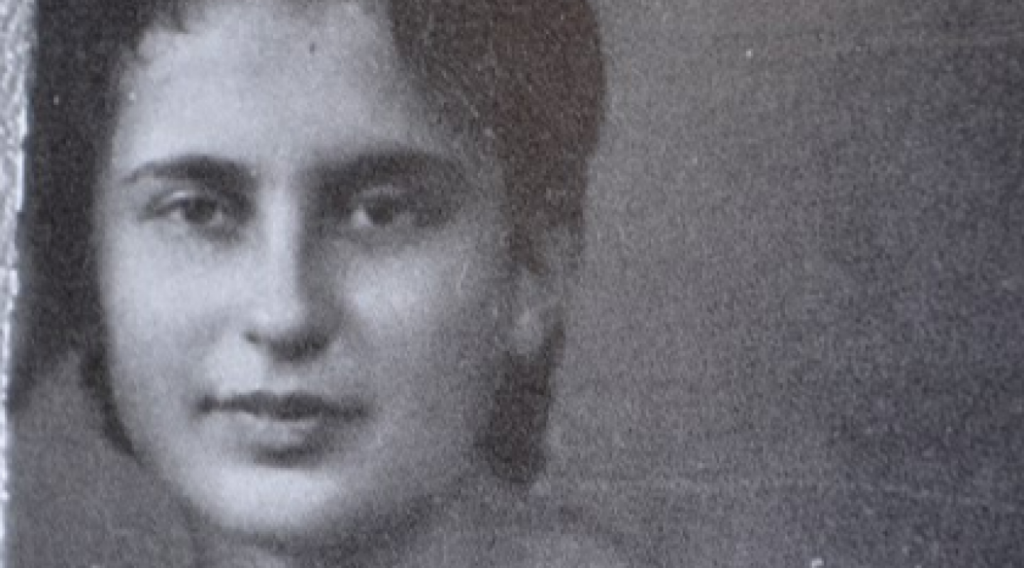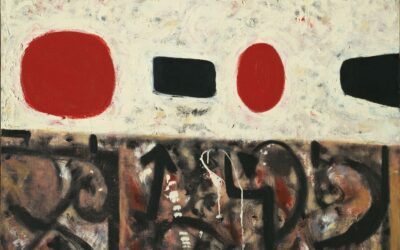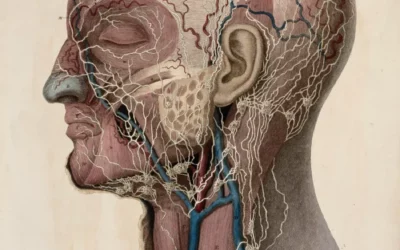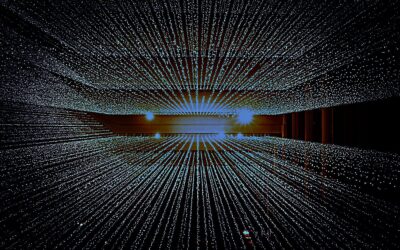Who was Sabina Spielrein?

Sabina Spielrein (1885-1942) was a pioneering Russian psychoanalyst whose innovative theories of sexuality, destruction, and transformation shaped the early development of psychoanalysis. Over a brief but brilliant career cut short by the Holocaust, Spielrein made groundbreaking contributions to the understanding of the death instinct, child psychology, and the creative interplay of opposites in the human psyche. At the heart of her work was a fascination with the paradoxical relationship between love and destruction, creation and annihilation – themes that emerged from her own tempestuous life history and complex relationships with the founders of modern depth psychology. By illuminating the dynamic interplay of emotions, drives, and archetypal images in the individual and collective unconscious, Spielrein’s ideas presaged key developments in Freudian, Jungian and post-Jungian thought. Her legacy as both a thinker and a female pioneer in a male-dominated field continues to inspire new scholarship at the intersection of psychoanalysis, feminism, and intellectual history.
Major Works and Theories:
Key Ideas and Legacy:
Emphasized the dynamic interplay of opposites (love/destruction, creation/annihilation) within the individual and collective psyche.
Recognized the symbolic and transformative potential of schizophrenic language and delusions.
Highlighted the maternal origins of language and the importance of the pre-oedipal period for psychosexual development, anticipating later feminist psychoanalytic perspectives.
Developed an integrative approach that bridged Freudian, Jungian, and object relations theories.
As a pioneering female analyst, Spielrein overcame significant personal and historical obstacles to make lasting contributions to the understanding of sexuality, creativity, and the mind.
“Destruction as the Cause of Coming into Being” (1911):
Argued that the sex drive contains an ambivalent destructive component necessary for transformation and creativity.
“Concerning the Psychological Content of a Case of Schizophrenia” (1911):
Pioneering analysis of schizophrenic language and fantasies, emphasizing the meaningful and transformative dimension of psychosis.
Theories on child development and the mother-infant bond (1920s):
Explored how early interactions between mother and child lay the foundations for the emergence of language, imagination, and the ego.
Influence on Jung and Freud:
Spielrein’s case provided early confirmation for Freud’s seduction theory and influenced the development of Jung’s word association tests and dream analysis.
Her ideas about the destructive aspect of sexuality and its role in creativity may have shaped Freud’s later formulation of the life and death instincts.
While Spielrein initially embraced Freudian ideas, she shared Jung’s emphasis on the prospective and creative functions of the unconscious and the role of mythology in the psyche.
Spielrein’s journey as a psychoanalytic theorist began with her treatment as a young patient of Carl Jung at the Burghölzli psychiatric clinic in Zurich in 1904. Admitted for hysteria and depression related to childhood abuse and a conflicted relationship with her father, the brilliant 19-year-old Russian Jewish medical student quickly developed an intense bond with her 29-year-old Swiss psychiatrist. What began as a doctor-patient relationship blossomed into a passionate love affair, plunging both parties into a vortex of desire, guilt, and emotional turmoil. Spielrein became Jung’s first analytic case and provided confirmation of Freud’s still controversial seduction theory, which posited actual childhood sexual trauma (rather than fantasy) as the origin of hysteria. Spielrein’s treatment also involved Jung’s early experiments with word association tests and dream analysis, which would become key elements of his distinctive analytic approach.
The Jung-Spielrein relationship reached a crisis point in 1909, when Jung abruptly terminated their affair and analysis due to pressure from Freud, his wife, and Spielrein’s mother. The painful rupture, which Spielrein experienced as a kind of psychological death and rebirth, reinforced her interest in the intimate link between love and destruction. Her seminal 1911 paper “Destruction as the Cause of Coming into Being” argued that the sex drive contains an ambivalent destructive component, which is necessary for transformation and new creation. Spielrein described an oscillation between positive and negative forces within the psyche, which she saw as reflecting a broader dialectic in nature between life and death, creation and destruction. Her ideas about the destructive dimension of sexuality and its role in fueling creativity anticipated and may have influenced Freud’s later formulation of the life and death instincts.
Spielrein went on to study medicine and complete her Ph.D. under the supervision of Freud and his colleague Paul Federn in Vienna. Her 1911 dissertation, “Concerning the Psychological Content of a Case of Schizophrenia,” was the first psychoanalytic dissertation ever written. Spielrein’s groundbreaking analysis of a schizophrenic woman’s language and fantasies focused on themes of birth, death, sexuality, and religious transformation, showing the influence of both Freud’s theory of the unconscious and Jung’s interest in mythology and the collective psyche. Spielrein argued that schizophrenic speech and delusions contain meaningful archetypal symbols that express repressed emotional conflicts, particularly ambivalent feelings toward one’s parents. Her recognition of the symbolic and transformative dimension of madness challenged the era’s predominantly degenerative, biological explanations of schizophrenia.
As one of the first female psychoanalysts, Spielrein struggled to establish her professional identity and gain recognition within the male-dominated Vienna Psychoanalytic Society. She was initially enthusiastic about Freud’s ideas and saw herself as more of a Freudian than a Jungian, despite her formative bond with Jung. However, she clashed with Freud over the primacy of infantile sexuality and shared Jung’s greater emphasis on the prospective and creative functions of the unconscious. Spielrein eventually distanced herself from both Freud and Jung and developed her own distinctive voice as an original thinker. Her later work in child psychology and language acquisition in the 1920s, conducted in Geneva and Moscow, focused on the mother-child relationship as the origin of the ego and emphasized the role of the “mother tongue” in structuring thought and identity. Spielrein saw language as a bridge between biology and culture, the body and the social order.
In a series of innovative papers, Spielrein explored how early interactions between mother and child lay the affective and linguistic foundations for the later emergence of imagination, symbolism, and a differentiated self. For Spielrein, the nursing infant’s ambivalent experience of the mother’s breast as both a source of pleasure and frustration provides a model for the nascent ego’s struggle to distinguish itself from the world. Drawing on her experience analyzing her own children, Spielrein described how the acquisition of language allows the child to imagine, play with, and internalize the absent mother, paving the way for abstract thought and creativity. In focusing on the maternal basis of language and the centrality of the pre-oedipal period for psychosexual development, Spielrein’s work converged with the ideas of the British child analyst Melanie Klein. It also anticipated later feminist critiques of the patriarchal bias in Freudian and Lacanian theories of subject formation.
Spielrein’s boundary-crossing life and work resists easy categorization within any single school of psychoanalytic thought. While she is often portrayed as a disciple of either Freud or Jung, her original contributions exceeded and challenged both men’s frameworks. Spielrein’s emphasis on the destructive dimension of sexuality and its transformative potential aligned her more with Freud’s drive theory than with Jung’s conception of a unitary life force or libido. At the same time, her understanding of the psyche as a dynamic interplay of opposites, her interest in mythology and folklore, and her emphasis on the symbolic and prospective functions of the unconscious resonated more with Jung. Spielrein’s theories of child development and the ego’s emergence from the mother-infant bond also converged with the ideas of later object relations theorists like Klein and Winnicott. In many ways, Spielrein’s integrative approach presaged contemporary efforts to bridge Freudian, Jungian, and post-Jungian perspectives in psychoanalysis.
Spielrein’s untimely death in the Holocaust underscores the historical and cultural catastrophe that claimed her legacy for many decades. Shot along with her daughters by the Nazis in her native Rostov-on-Don in 1942, Spielrein and her work were largely forgotten until the 1970s, when feminist scholars began recovering pioneering women analysts excluded from the psychoanalytic canon. The 1977 discovery of her letters and diaries in a Geneva basement sparked a wave of new interest in Spielrein as an historical figure and thinker. Subsequent books, articles, films, and plays have alternately romanticized and reclaimed her story, often focusing more on her status as a femme fatale between Freud and Jung than on her own substantial contributions to psychoanalysis.
More recent Spielrein scholarship has sought to re-center her as a major theorist in her own right, whose original ideas about sexuality, creativity, and development transformed modern understandings of the mind. The latest research, drawing on previously unpublished archival material in Russia and Switzerland, paints a fuller picture of Spielrein’s personal and professional trajectory, from her harrowing experiences as a patient, lover, and mother to her prodigious output as a clinician, researcher, and writer in multiple languages. What emerges is a portrait of a brilliant, passionate, and remarkably resilient woman who overcame immense personal and historical obstacles to leave an indelible mark on the history of ideas. As the fields of psychoanalysis and feminism continue to evolve, Spielrein’s life and work take on new resonance as an enduring testament to the creative power of integrating mind, body, and emotions in the quest for knowledge and liberation.
Timeline of her life:
1885: Born in Rostov-on-Don, Russia, to a wealthy Jewish family.
1904: Admitted to the Burghölzli psychiatric clinic in Zurich for treatment of hysteria and depression. Becomes Carl Jung’s first analytic case and develops a passionate relationship with him.
1905-1909: Receives treatment from Jung and begins studying medicine and psychology in Zurich.
1909: Jung abruptly terminates their affair and analysis under pressure from Freud and others.
1911: Completes her medical degree and publishes her seminal paper “Destruction as the Cause of Coming into Being,” which explores the link between sexuality and destruction, anticipating Freud’s later concept of the death instinct.
1911: Completes her Ph.D. dissertation “Concerning the Psychological Content of a Case of Schizophrenia,” the first psychoanalytic dissertation ever written, under the supervision of Freud and Paul Federn in Vienna.
1912: Becomes a member of the Vienna Psychoanalytic Society and sets up her own practice in Vienna.
1920s: Conducts research on child psychology and language acquisition in Geneva and Moscow, focusing on the mother-child relationship as the origin of the ego.
1942: Murdered by the Nazis along with her two daughters in Rostov-on-Don during the Holocaust.
Publications:
Sabina Spielrein’s notable publications include:
- Destruction as the Cause of Coming Into Being (1912) – In this seminal work, Spielrein explores the concept of the death instinct (Thanatos) and its role in the development of human psychology, contrasting it with the life instinct (Eros) proposed by Freud.
- The Development of the Child (1913) – Discusses early childhood development from a psychoanalytic perspective, emphasizing the importance of parent-child relationships and early experiences in shaping personality.
- Psychoanalysis of the Child (1921) – Explores psychoanalytic techniques and theories as applied to children and adolescents, pioneering the field of child psychoanalysis.
Quotes:
Specific quotes from Sabina Spielrein’s writings are not readily available. Her work often delved into the complexities of human psychology, focusing on developmental stages and the interplay between destructive and constructive drives.
- Books: Sabina Spielrein: Forgotten Pioneer of Psychoanalysis Amazon
- YouTube Lecture: Sabina Spielrein: A Hidden Genius
- Biography: Sabina Spielrein’s Life
- Documentary: Sabina Spielrein: The Forgotten Woman
- Research: Publications on Sabina Spielrein
- Article: Spielrein’s Contribution to Psychoanalysis
- Institute: Spielrein at International Psychoanalytic University Berlin
- Podcast: Sabina Spielrein’s Legacy
- Quotes: Sabina Spielrein Quotes
- Lecture Series: Sabina Spielrein’s Theories and Legacy
- Bio Book Review: Review of Sabina Spielrein: The Woman and the Myth
- Journal Article: Sabina Spielrein: A Pioneer of Psychoanalysis
- Documentary: My Name Was Sabina Spielrein
- Research Database: Spielrein’s Work on JSTOR
- Film: A Dangerous Method (about Sabina Spielrein)
- Podcast: Sabina Spielrein’s Contributions to Psychoanalysis
- Biographical Article: Sabina Spielrein: Life and Contributions
Further Reading:
To delve deeper into Sabina Spielrein’s contributions and psychoanalytic theories:
- Books:
- Sabina Spielrein: Forgotten Pioneer of Psychoanalysis edited by Coline Covington and Barbara Wharton
- Sabina Spielrein: The Woman and the Myth by Angela M. Sells
- Web Resources:
- The International Psychoanalytical Association (IPA) archives
- Academic journals and articles on psychoanalysis and developmental psychology
Read More Depth Psychology Articles:
Taproot Therapy Collective Podcast
Jungian Innovators
Jungian Topics
How Psychotherapy Lost its Way
Therapy, Mysticism and Spirituality?
The Symbolism of the Bollingen Stone
What Can the Origins of Religion Teach us about Psychology
The Major Influences from Philosophy and Religions on Carl Jung
How to Understand Carl Jung
How to Use Jungian Psychology for Screenwriting and Writing Fiction
The Symbolism of Color in Dreams
How the Shadow Shows up in Dreams
Using Jung to Combat Addiction
Jungian Exercises from Greek Myth
Jungian Shadow Work Meditation
Free Shadow Work Group Exercise
Post Post-Moderninsm and Post Secular Sacred
The Origins and History of Consciousness
Jung’s Empirical Phenomenological Method
The Future of Jungian Thought
Jungian Analysts


























0 Comments